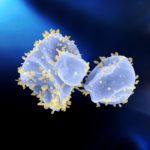Link to Pubmed [PMID] – 34190379
Link to DOI – 10.1111/1462-2920.15654
Environ Microbiol 2021 Jun; 23(8):4612-4630
Saccharolobus (formerly Sulfolobus) shibatae B12, isolated from a hot spring in Beppu, Japan in 1982, is one of the first hyperthermophilic and acidophilic archaeal species to be discovered. It serves as a natural host to the extensively studied spindle-shaped virus SSV1, a prototype of the Fuselloviridae family. Two additional Sa. shibatae strains, BEU9 and S38A, sensitive to viruses of the families Lipothrixviridae and Portogloboviridae, respectively, have been isolated more recently. However, none of the strains has been fully sequenced, limiting their utility for studies on archaeal biology and virus-host interactions. Here, we present the complete genome sequences of all three Sa. shibatae strains and explore the rich diversity of their integrated mobile genetic elements (MGE), including transposable insertion sequences, integrative and conjugative elements, plasmids, and viruses, some of which were also detected in the extrachromosomal form. Analysis of related MGEs in other Sulfolobales species and patterns of CRISPR spacer targeting revealed a complex network of MGE distributions, involving horizontal spread and relatively frequent host switching by MGEs over large phylogenetic distances, involving species of the genera Saccharolobus, Sulfurisphaera and Acidianus. Furthermore, we characterize a remarkable case of a virus-to-plasmid transition, whereby a fusellovirus has lost the genes encoding for the capsid proteins, while retaining the replication module, effectively becoming a plasmid.




